The island Maui has a lot to offer for visitors: hiking, water activities, sun bathing, the list is endless. During the winter there is a unique opportunity to witness something great (in the literal meaning of the word) – whales. After doing a little bit of a research, I realized that there are a lot more to it than seems at first. This post discusses the overall experience of whale watching, some whale facts, and history of Lahaina. You’d be surprise to learn how whales contributed to the island development.
For the best whale watching experience just look out for following things: the weather forecast, choose morning tour on the small raft of 10-12 passengers and be ready to learn about the biggest animals in the world.
Why whale watching in Maui is a thing?
From December to May the humpback whales migrate from Alaska to Hawai’i to breed, give birth, and care for their babies. Maui is the best island to see the whale from due to it’s location and natural barrier to the cold Pacific currents.
Having seen gray whales (well, rather their flapping fins) in the southern California several times before, I wasn’t really expecting something exciting in Maui, but oh boy, I was wrong. After seeing a whale bigger than our raft within couple feet, I knew I had to write about it. Readers can scroll down to the end to see a unique footage of whale chilling in couple feet from our raft or glance at the whale facts.

The details of picking the whale watching company
There are a lot of options for whale watching in Maui when it comes to choosing the tour operator. Most of them roughly charge between $35 to $120 per person. Why such difference? Well, the variables affecting the price are: food service, hotel pick up, the size of the vessel, and that’s pretty much it. I think morning is the best time to see whales. Visitor is guaranteed to see unforgettable sunrise (and with it, monumental transition of night into morning). Another tip I’d recommend is choosing a smaller craft, it creates more intimate experience. All tours are accompanied by either students or professionals in the marine biology.
All and all, I found that ultimatewhalewatch provides good service. Although going with any other company, guaranties lasting memories. Another informative resource that covers whale watching experience from A to Z can be found at thehawaiivacationguide. The links I am sharing are not sponsored, just spreading good word.
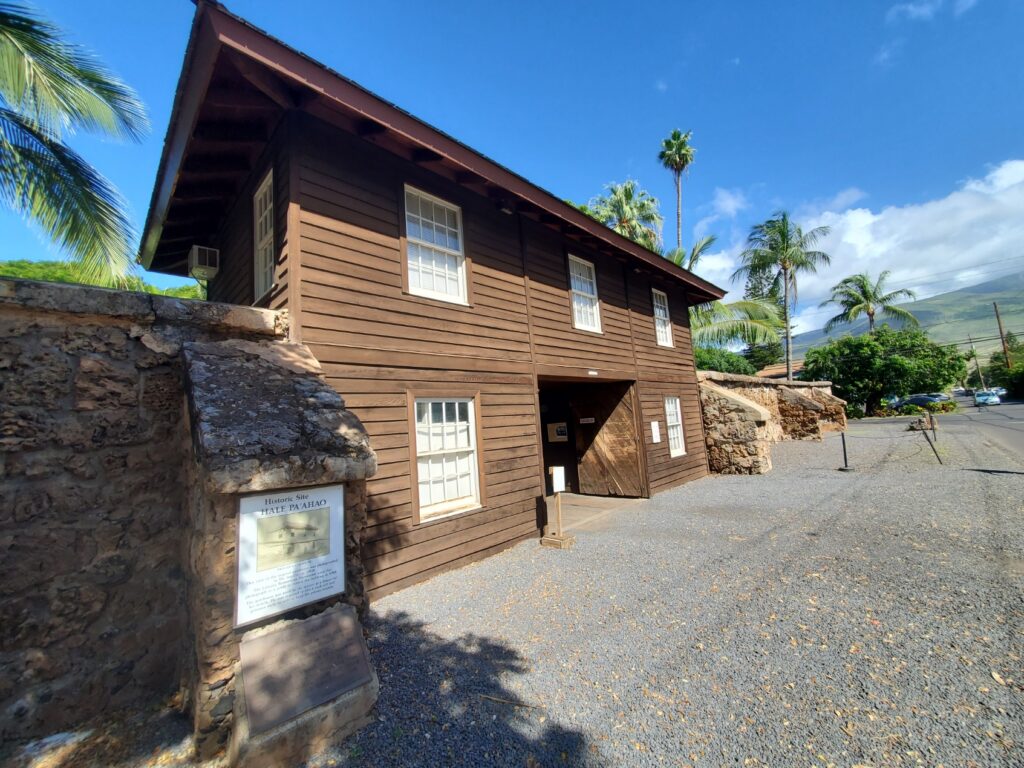
Whale facts
| Lifespan | 30-40 years |
| Length | Adult is 35 ft to 50 ft, newborn calf is 15 ft at birth |
| Weight | Adult is 20-40 tons, newborn is 2,000 pounds at birth |
| Tail | Two flukes, each 7.5 ft wide |
| Blowholes | Two |
| Flippers | Used for steering |
| Dorsal hump | Series of 6 to 12 knuckle-like ridges or humps |
| Eyes | One either side of the head, the size of a baseball |
| Blubber | Layer of fat under the skin, may be 6 inch of mor in thickness |
| Body shape | Long and narrow |
| Pod | A group of 3 to 5 whales |
| Throat grooves | Folds in the skin |
Spotting whales
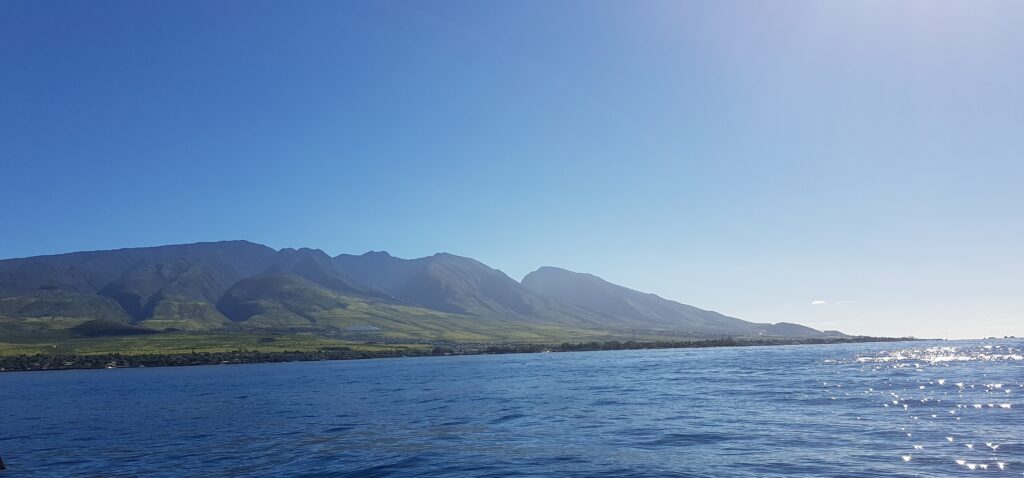
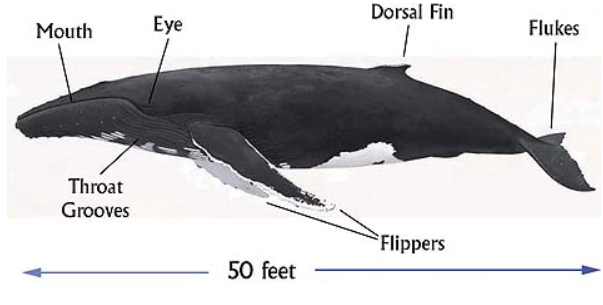
For someone who never seen a whale it might be a little difficult to spot one. I am sharing some tips and jargon that people use to sound smart talking about whales. The easiest way is to scan slowly across the water from left to the right. Patience here is the key. Watch for the signs of breaching or blowing. What do these words mean?
- Breaching – the whale leaps out of the water and lands with splash. Normally it doesn’t happen like you might have seen on TV, rather flapping flukes. So look out for splashes
- Sounding – diving after taking the breath. The flukes usually shown out of the water.
- Blowing – when whale comes out to the surface to breathe. Spray can rise 15 ft into the air. The blow makes a loud swooshing sound that can be heard some distance away
A little bit about Lahaina history
I was surprised to learn that whales had played significant role not just in Lahaina’s development, but in the island as well. In the beginning of the 19th century the whale oil was a modern solution for a light. There are two benefits of the whale oil compared to a candle – it is smoke free and burns brighter. This almost brought whales to the brink of extinction in many parts of the world.
The location of the Hawai’i archipelago is such that it creates shalow and warm waters. The humpback whales head here from Alaska to breed and mate. Unfortunately, it made them volnurable to human exploitation. Sadly what was bad for the animals, was good for the humans, the demand for the whale oil helped Lahaina to develop into a booming harbor for the hunters and sailors.
“The whaling industry in Hawai’i didn’t last long, only from 1819 to about 1870, but it had huge impact on commerce, the development of the kingdom, and the lives of the people. Business boomed when the ships anchored offshore. After months of cramped quarters and hard, dangerous labor, Lahaina was every sailor’s dream.”
Lahaina Heritage Museum
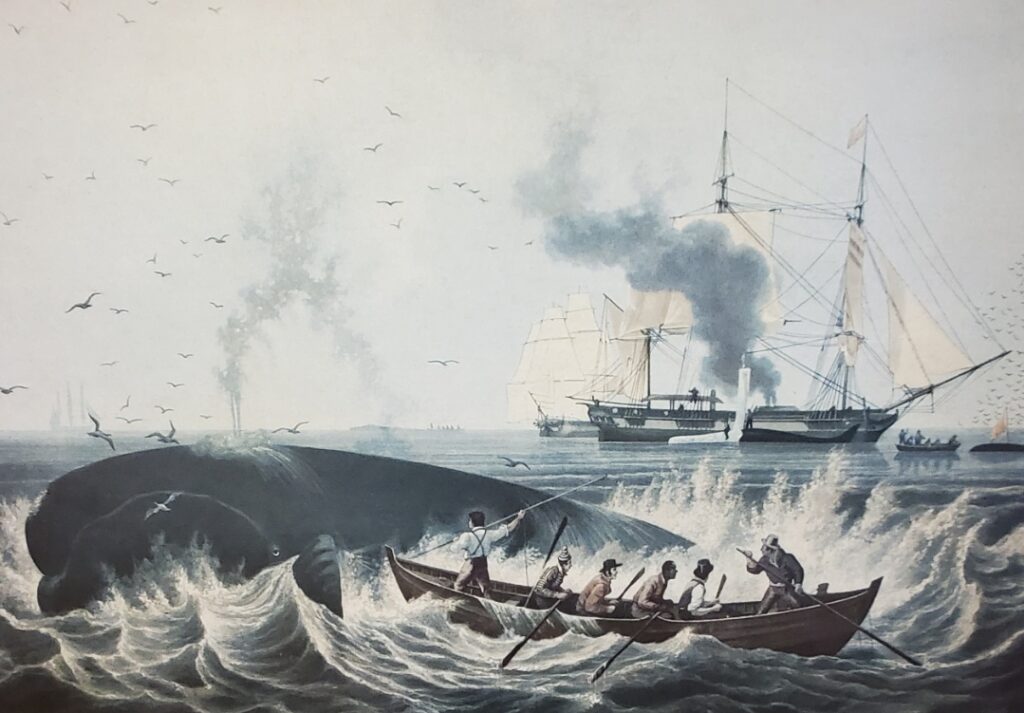
The golden age of whale hunting made Lahaina and Honolulu to be the two biggest ports in Hawai’i during the 19th century. It served as economic engine behind the islands developments. The influx of foreigners (sailors and traders in its majority) contributed to the intercultural mixing as well. The arrival of strangers had changed the quiet rhythm of life on the island to the point that in 1851 a new prison had to be build to contain rowdy sailors. Interesting fact that back in those times a person could be detained for reckless horse riding in the town. Although according to the records, the prison was rather a vacation where for a dollar prisoners were fed and free to mingle with other inmates.
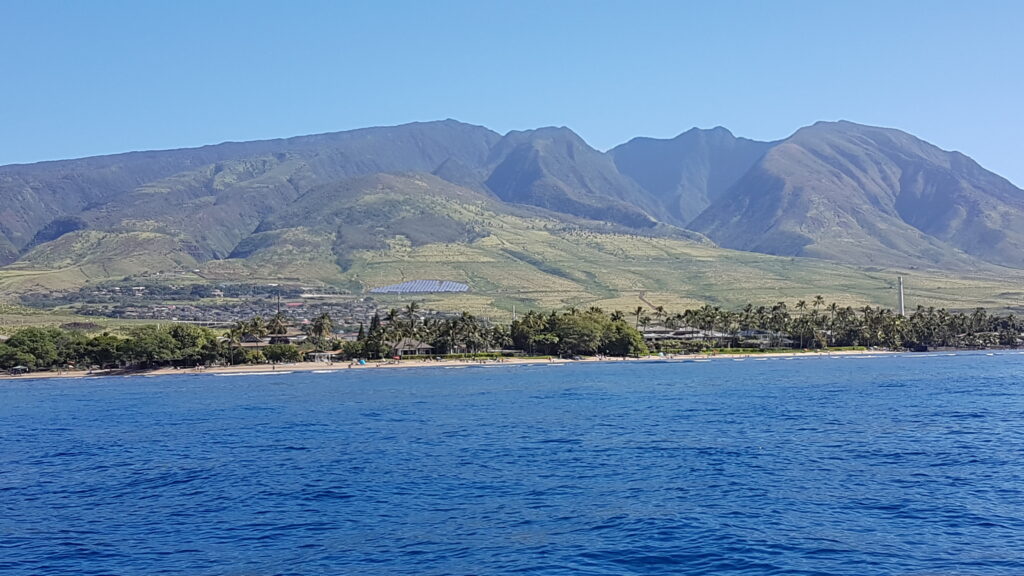
I found it interesting how animal migration had affected the human one. The Hawai’i islands become a frequent pit-stop on many European sea journeys. At the end of the 19th century the whaling industry started decaying. The crude oil discovery replaced whale oil use, which meant less ships harbored, and eventual economic decline…until sugarcane was introduced to the islands, but that is for another post.
The history of the island is so remarkable that the US had designated Lahaina as registered national historic landmark in 1964.
Final thoughts
One thing is to watch documentary about whales on National Geographic and admire the greatness of the biggest mammal. Another – to see it with your own eyes. For me whale watching in Maui turned to a tradition, every time I am on the island I go to see them. Leaving a video here to show the unique and rare footage to serve as a teaser. It’s amazing to see this gigantic animal in its natural habitat – was something that I’ll remember for the rest of my life.
A rare view to whale’s world

